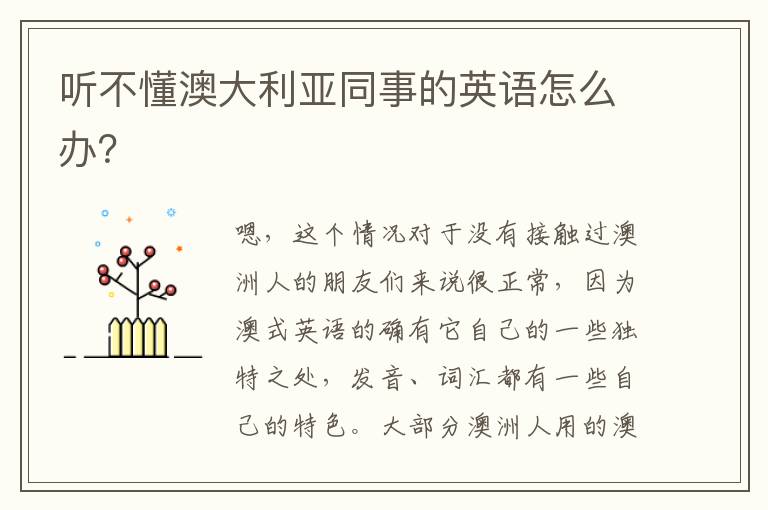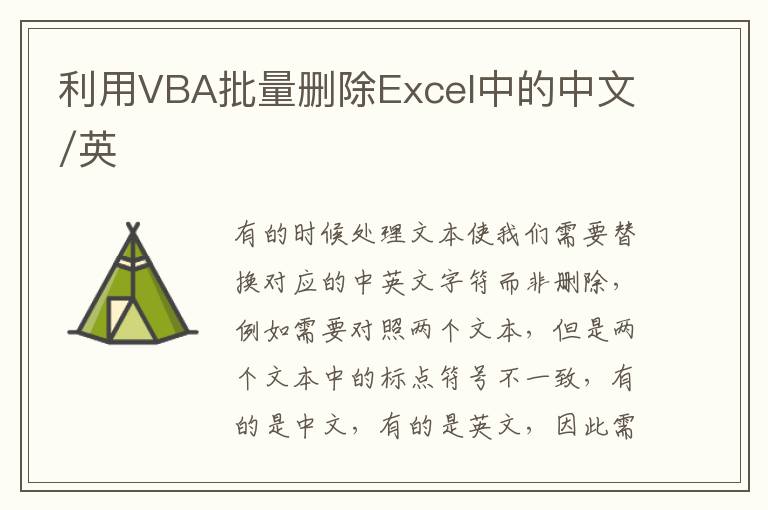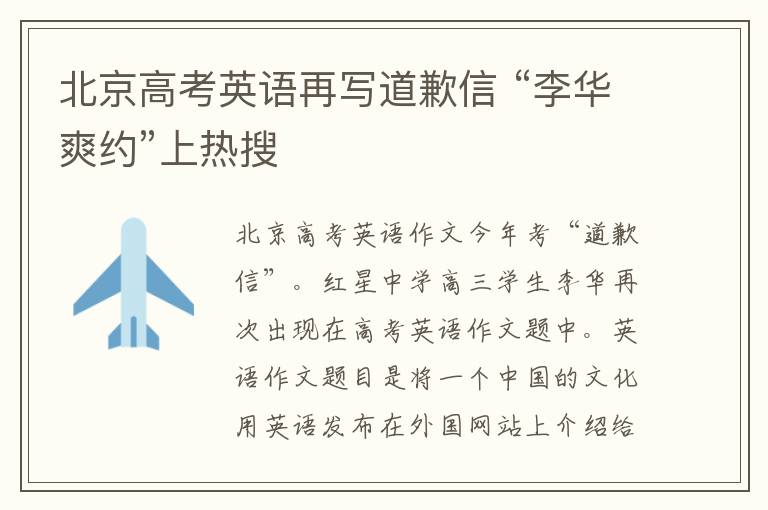2023年考研英语阅读的经典试题及答案

SAMPLE 12
[生物学类]
题目序号
题型归类
第1题
细节推导题型
第2题
写作手法题型
第3题
审题定位与中心主旨题型
第4题
词汇题型
第5题
审题定位题型
Flatfish, such as the flounder, are among the few vertebrates that lackapproximate bilateral symmetry . Most striking among the many asymmetriesevident in an adult flatfish is eye placement: before maturity one eyemigrates, so that in an adult flatfish both eyes are on the same side of thehead. While in most species with asymmetries virtually all adults share thesame asymmetry, members of the starry flounder species can be either left-eyed or right-eyed. In the waters between theUnited States and Japan, the starry flounder populations vary from about 50percent left-eyed off the United States West Coast, through about 70 percentleft-eyed halfway between the United States and Japan, to nearly 100 percentleft-eyed off the Japanese coast.
Biologists call this kind of gradual variation over a certain geographicrange a cline and interpret clines as strong indications that the variation isadaptive, a response to environmental differences. For the starry flounder thisinterpretation implies that a geometric difference is adaptive, that left-eyedness in the Japanesestarry flounder has been selected for, which provokes a perplexing question:what is the selective advantage in having both eyes on one side rather than onthe other?
The ease with which a fish can reverse the effect of the sidedness of itseye asymmetry simply by turning around has caused biologists to study internalanatomy, especially the optic nerves, for the answer. In all flatfish the opticnerves cross, so that the right optic nerve is joined to the brains left side and vice versa. Thiscrossing introduces an asymmetry, as one optic nerve must cross above or belowthe other. G. H. Parker reasoned that if, for example, a flatfishs left eye migrated when the rightoptic nerve was on top, there would be a twisting of nerves, which might bemechanically disadvantageous. For starry flounders, then, the left-eyed varietywould be selected against, since in a starry flounder the left optic nerve isuppermost.
The problem with the above explanation is that the Japanese starryflounder population is almost exclusively left-eyed, and natural selectionnever promotes a purely less advantageous variation. As other explanationsproved equally untenable, biologists concluded that there is no importantadaptive difference between left-eyedness and right-eyedness, and that the twocharacteristics are genetically associated with some other adaptivelysignificant characteristic. This situation is one commonly encountered by evolutionarybiologists, who must often decide whether a characteristic is adaptive orselectively neutral. As for the left-eyed and right-eyed flatfish, theirdifference, however striking, appears to be an evolutionary red herring.
1. According to the text, starry flounder differ form most other speciesof flatfish in that starry flounder
[A] are not basically bilaterally symmetric.
[B] do not become asymmetric until adulthood.
[C] do not all share the same asymmetry.
[D] have both eyes on the same side of the head.
2. Which of the following best describes the organization of the text asa whole?
[A] A phenomenon is described and an interpretation presented andrejected.
[B] A generalization is made and supporting evidence is supplied andweighed.
[C] A contradiction is noted and a resolution is suggested and thenmodified.
[D] A series of observations is presented and explained in terms of thedominant theory.
3. The text supplies information for answering which of the followingquestions?
[A] Why are Japanese starry flounder mostly left-eyed?
[B] Why should the eye-sidedness in starry flounder be consideredselectively neutral?
[C] Why have biologists recently become interested in whether acharacteristic is adaptive or selectively neutral?
[D] How do the eyes in flatfish migrate?
4. Which of the following is most clearly similar to a cline as it isdescribed in the second paragraph of the text?
[A] A vegetable market in which the various items are grouped accordingto place of origin.
[B] A wheat field in which different varieties of wheat are planted toyield a crop that will bring the maximum profit.
[C] A flower stall in which the various species of flowers are arrangedaccording to their price.
[D] A housing development in which the length of the front strutssupporting the porch of each house increases as houses are built up the hill.
5. Which of the following phrases from the text best expresses the authors conclusion about the meaning ofthe difference between left-eyed and right-eyed flatfish?
[A] Most striking
[B] variation is adaptive
[C] mechanically disadvantageous
[D] evolutionary red herring
[答案与考点解析]
1. 【答案】C
【考点解析】这是一道细节推导题。根据本题题干中的most other species可以把本题的答案信息来源确定在第一段的第三句,从第三句的主从句中可以归纳推导出本题的正确答案C。本句中的while一词的含义是虽然、尽管,用来表达事物之间的对照对比。考生在解题时一定要首先学会审题定位的基本功。
2. 【答案】A
【考点解析】这是一道文章具体写作手法题。这是一道比较难的题型,需要考生对文章的叙述结构有深刻的理解。本文第一段介绍了一种现象,第二段和第三段是生物学家对这种现象的解释,第四段是本文作者对生物学家的解释提出否定。可见本题的正确选项是A。考生在解题时一定要注意文章的发展脉络。
3. 【答案】B
【考点解析】本题是一道审题定位题型。本题的题干没有具体给出寻找答案信息的任何线索。在这种情况下考生一定要牢记原文作者的主要意图。具体来说,本文作者的主要意图是要否定一些生物学家对某种生物现象的解释。相关的内容出现在原文第四段的首句。如果考生能够认识到原文第四段首句在全文中的重要性,就找到了破解本题的方法,再把第三段的尾句和第四段的第二、三句通读并且仔细理解就会找出本题的正确答案B。当然这是一道比较难的题目,需要考生良好的答题素质。希望考生在迷失答题思路的时候,一定要多想一想从原文的中心主旨句和每段的段首句设法破解难题。
4. 【答案】D
【考点解析】这是一道词汇理解题。根据原文中的cline一词可迅速把本题的答案信息确定在第二段第一句。第二段第一句中的gradual、geographic、adaptive和environmental differences等词提供了本题的正确答案D。考生在阅读原文回答问题时,一定要学会识读原文中的相关重要词语。
5. 【答案】D
【考点解析】这是一道审题定位题。根据题干中的the authors conclusion可将本题的答案信息迅速确定在尾段,确切地说就是尾段的最后一句。考生一定要清楚原文作者的结论一般会出现在全文的尾段。本题的正确答案应该是涉及到尾段的选项D。
[参考译文]
鲆鱼,例如比目鱼,是少数左右两侧不太对称的脊椎动物之一。在成年的比目鱼所具有的众多明显的不对称现象中,最令人震惊的是它的眼睛的位置:在成熟以前,一只眼睛会移动,结果是成年比目鱼的两只眼睛都移动到头部的同一侧。在大多数非对称的物种中,成年个体的非对称性看起来都是相同的,但星形比目鱼种的成员则既可以是眼在左侧的,也可以是眼在右侧的。在美国和日本之间的水域中,星形比目鱼的群体组成不断变化,在美国西海岸附近,50%是眼在左侧的,在美国和日本之间的中间位置,70%是眼在左侧的,而到了靠近日本海岸的地方,则几乎百分之百都是眼在左侧的了。
生物学家将这种在特定地理区域范围内的逐渐变化称为渐变群,并针对渐变群解释说,它强烈地表明这种变化是适应性的,是对环境差异所作出的反应。对于星形比目鱼来说,这种说法暗示形状上的差异是适应性的,日本的星形比目鱼之所以眼在左侧,是选择的结果,但这又引起了一个令人困惑的问题:两只眼睛都在一侧比两只眼睛分在两侧具有什么选择性的优势呢?
鱼只要简单地转个身,就可以使它的眼睛在一侧的不对称性所带来的影响逆转,这是非常容易的,所以生物学家只好去研究内部解剖学,特别是研究视觉神经,以寻求答案。在所有的比目鱼中,视觉神经都是交叉的,右边的视觉神经连接到大脑的左半部,左边的视觉神经连接到大脑的右半部。这种交叉会引起不对称性,因为一条视觉神经必须会在另一条视觉神经的上面,要不就在下面。GH帕克对此解释说,举例来说,如果一条比目鱼的右视觉神经在上面而左眼发生了移动,那么两条视觉神经就会扭曲纠缠在一起,这在结构上可能是不利的。于是对于星形比目鱼来说,就不应该选择眼在左侧,因为在星形比目鱼中,左侧的视觉神经是在上面的。
上面这种解释的问题是日本的星形比目鱼种群几乎全是眼在左侧的,而大自然的选择则从不推动完全没有有利条件的种属发展。由于其它的解释被证明同样也是站不住脚的,所以生物学家得出了结论,认为眼是在左侧还是在右侧并没有什么重要的适应性差异,这两种特征在遗传上与别的一些有意义的适应性特征相关。研究进化的生物学家经常会遇到这样的情况,他们经常必须判断一个特征究竟是适应性的,还是在选择上中性的。对于眼在左侧的比目鱼和眼在右侧的比目鱼来说,它们的差异虽然很惊人,但这似乎是进化过程中的一个分散人们注意力的不相干的现象。
SAMPLE 12
[生物学类]
题目序号
题型归类
第1题
细节推导题型
第2题
写作手法题型
第3题
审题定位与中心主旨题型
第4题
词汇题型
第5题
审题定位题型
Flatfish, such as the flounder, are among the few vertebrates that lackapproximate bilateral symmetry . Most striking among the many asymmetriesevident in an adult flatfish is eye placement: before maturity one eyemigrates, so that in an adult flatfish both eyes are on the same side of thehead. While in most species with asymmetries virtually all adults share thesame asymmetry, members of the starry flounder species can be either left-eyed or right-eyed. In the waters between theUnited States and Japan, the starry flounder populations vary from about 50percent left-eyed off the United States West Coast, through about 70 percentleft-eyed halfway between the United States and Japan, to nearly 100 percentleft-eyed off the Japanese coast.
Biologists call this kind of gradual variation over a certain geographicrange a cline and interpret clines as strong indications that the variation isadaptive, a response to environmental differences. For the starry flounder thisinterpretation implies that a geometric difference is adaptive, that left-eyedness in the Japanesestarry flounder has been selected for, which provokes a perplexing question:what is the selective advantage in having both eyes on one side rather than onthe other?
The ease with which a fish can reverse the effect of the sidedness of itseye asymmetry simply by turning around has caused biologists to study internalanatomy, especially the optic nerves, for the answer. In all flatfish the opticnerves cross, so that the right optic nerve is joined to the brains left side and vice versa. Thiscrossing introduces an asymmetry, as one optic nerve must cross above or belowthe other. G. H. Parker reasoned that if, for example, a flatfishs left eye migrated when the rightoptic nerve was on top, there would be a twisting of nerves, which might bemechanically disadvantageous. For starry flounders, then, the left-eyed varietywould be selected against, since in a starry flounder the left optic nerve isuppermost.
The problem with the above explanation is that the Japanese starryflounder population is almost exclusively left-eyed, and natural selectionnever promotes a purely less advantageous variation. As other explanationsproved equally untenable, biologists concluded that there is no importantadaptive difference between left-eyedness and right-eyedness, and that the twocharacteristics are genetically associated with some other adaptivelysignificant characteristic. This situation is one commonly encountered by evolutionarybiologists, who must often decide whether a characteristic is adaptive orselectively neutral. As for the left-eyed and right-eyed flatfish, theirdifference, however striking, appears to be an evolutionary red herring.
1. According to the text, starry flounder differ form most other speciesof flatfish in that starry flounder
[A] are not basically bilaterally symmetric.
[B] do not become asymmetric until adulthood.
[C] do not all share the same asymmetry.
[D] have both eyes on the same side of the head.
2. Which of the following best describes the organization of the text asa whole?
[A] A phenomenon is described and an interpretation presented andrejected.
[B] A generalization is made and supporting evidence is supplied andweighed.
[C] A contradiction is noted and a resolution is suggested and thenmodified.
[D] A series of observations is presented and explained in terms of thedominant theory.
3. The text supplies information for answering which of the followingquestions?
[A] Why are Japanese starry flounder mostly left-eyed?
[B] Why should the eye-sidedness in starry flounder be consideredselectively neutral?
[C] Why have biologists recently become interested in whether acharacteristic is adaptive or selectively neutral?
[D] How do the eyes in flatfish migrate?
4. Which of the following is most clearly similar to a cline as it isdescribed in the second paragraph of the text?
[A] A vegetable market in which the various items are grouped accordingto place of origin.
[B] A wheat field in which different varieties of wheat are planted toyield a crop that will bring the maximum profit.
[C] A flower stall in which the various species of flowers are arrangedaccording to their price.
[D] A housing development in which the length of the front strutssupporting the porch of each house increases as houses are built up the hill.
5. Which of the following phrases from the text best expresses the authors conclusion about the meaning ofthe difference between left-eyed and right-eyed flatfish?
[A] Most striking
[B] variation is adaptive
[C] mechanically disadvantageous
[D] evolutionary red herring
[答案与考点解析]
1. 【答案】C
【考点解析】这是一道细节推导题。根据本题题干中的most other species可以把本题的答案信息来源确定在第一段的第三句,从第三句的主从句中可以归纳推导出本题的正确答案C。本句中的while一词的含义是虽然、尽管,用来表达事物之间的对照对比。考生在解题时一定要首先学会审题定位的基本功。
2. 【答案】A
【考点解析】这是一道文章具体写作手法题。这是一道比较难的题型,需要考生对文章的叙述结构有深刻的理解。本文第一段介绍了一种现象,第二段和第三段是生物学家对这种现象的解释,第四段是本文作者对生物学家的解释提出否定。可见本题的正确选项是A。考生在解题时一定要注意文章的发展脉络。
3. 【答案】B
【考点解析】本题是一道审题定位题型。本题的题干没有具体给出寻找答案信息的任何线索。在这种情况下考生一定要牢记原文作者的主要意图。具体来说,本文作者的主要意图是要否定一些生物学家对某种生物现象的解释。相关的内容出现在原文第四段的首句。如果考生能够认识到原文第四段首句在全文中的重要性,就找到了破解本题的方法,再把第三段的尾句和第四段的第二、三句通读并且仔细理解就会找出本题的正确答案B。当然这是一道比较难的题目,需要考生良好的答题素质。希望考生在迷失答题思路的时候,一定要多想一想从原文的中心主旨句和每段的段首句设法破解难题。
4. 【答案】D
【考点解析】这是一道词汇理解题。根据原文中的cline一词可迅速把本题的答案信息确定在第二段第一句。第二段第一句中的gradual、geographic、adaptive和environmental differences等词提供了本题的正确答案D。考生在阅读原文回答问题时,一定要学会识读原文中的相关重要词语。
5. 【答案】D
【考点解析】这是一道审题定位题。根据题干中的the authors conclusion可将本题的答案信息迅速确定在尾段,确切地说就是尾段的最后一句。考生一定要清楚原文作者的结论一般会出现在全文的尾段。本题的正确答案应该是涉及到尾段的选项D。
[参考译文]
鲆鱼,例如比目鱼,是少数左右两侧不太对称的脊椎动物之一。在成年的比目鱼所具有的众多明显的不对称现象中,最令人震惊的是它的眼睛的位置:在成熟以前,一只眼睛会移动,结果是成年比目鱼的两只眼睛都移动到头部的同一侧。在大多数非对称的物种中,成年个体的非对称性看起来都是相同的,但星形比目鱼种的成员则既可以是眼在左侧的,也可以是眼在右侧的。在美国和日本之间的水域中,星形比目鱼的群体组成不断变化,在美国西海岸附近,50%是眼在左侧的,在美国和日本之间的中间位置,70%是眼在左侧的,而到了靠近日本海岸的地方,则几乎百分之百都是眼在左侧的了。
生物学家将这种在特定地理区域范围内的逐渐变化称为渐变群,并针对渐变群解释说,它强烈地表明这种变化是适应性的,是对环境差异所作出的反应。对于星形比目鱼来说,这种说法暗示形状上的差异是适应性的,日本的星形比目鱼之所以眼在左侧,是选择的结果,但这又引起了一个令人困惑的问题:两只眼睛都在一侧比两只眼睛分在两侧具有什么选择性的优势呢?
鱼只要简单地转个身,就可以使它的眼睛在一侧的不对称性所带来的影响逆转,这是非常容易的,所以生物学家只好去研究内部解剖学,特别是研究视觉神经,以寻求答案。在所有的比目鱼中,视觉神经都是交叉的,右边的视觉神经连接到大脑的左半部,左边的视觉神经连接到大脑的右半部。这种交叉会引起不对称性,因为一条视觉神经必须会在另一条视觉神经的上面,要不就在下面。GH帕克对此解释说,举例来说,如果一条比目鱼的右视觉神经在上面而左眼发生了移动,那么两条视觉神经就会扭曲纠缠在一起,这在结构上可能是不利的。于是对于星形比目鱼来说,就不应该选择眼在左侧,因为在星形比目鱼中,左侧的视觉神经是在上面的。
上面这种解释的问题是日本的星形比目鱼种群几乎全是眼在左侧的,而大自然的选择则从不推动完全没有有利条件的种属发展。由于其它的解释被证明同样也是站不住脚的,所以生物学家得出了结论,认为眼是在左侧还是在右侧并没有什么重要的适应性差异,这两种特征在遗传上与别的一些有意义的适应性特征相关。研究进化的生物学家经常会遇到这样的情况,他们经常必须判断一个特征究竟是适应性的,还是在选择上中性的。对于眼在左侧的比目鱼和眼在右侧的比目鱼来说,它们的差异虽然很惊人,但这似乎是进化过程中的一个分散人们注意力的不相干的现象。









